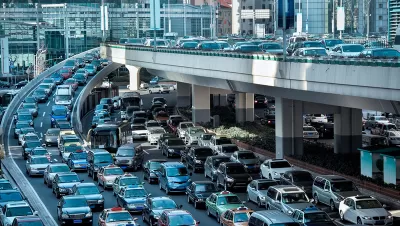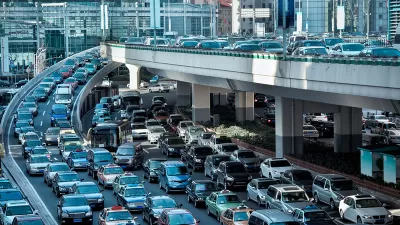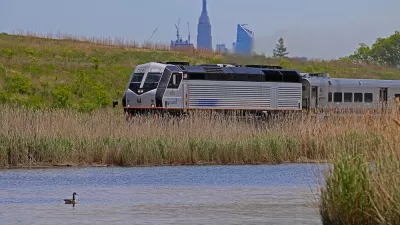Unsurprisingly, American workers whose commutes have been reduced or eliminated by new remote work arrangements are spending more time on rest, leisure, and childcare activities.

With the rise of remote work during the COVID-19 pandemic leading to a seismic shift in commuter behavior, Americans are, on aggregate, spending 60 million fewer hours commuting every day. So what is everyone doing with all that extra time? David Dam, Davide Melcangi, Laura Pilossoph, and Aidan Toner-Rodgers sought to find out, explaining their results in Liberty Street Economics.
According to the article, “Using detailed data from the American Time Use Survey (ATUS), we find that employed individuals allocate their saved commute time toward leisure activities and sleeping, while reducing overall work hours.” The researchers found a “substantial fall in time spent working,” with the decrease only partially offset by the increase in work-from-home hours. The study also found that “notable increases in leisure time and sleeping,” particularly among younger Americans, “who reported spending more time at social events, eating at restaurants or bars, and exercising” and spent more time with people outside their own households than older Americans, a fact likely reflective of higher COVID-19 risks for older people.
The researchers conclude that “The findings lend credence to the various reports on employees’ preferences for flexible work arrangements, given that cutting the commute enables people to spend their time on other activities, such as childcare or leisure.”
FULL STORY: What Have Workers Done with the Time Freed up by Commuting Less?

Planetizen Federal Action Tracker
A weekly monitor of how Trump’s orders and actions are impacting planners and planning in America.

San Francisco's School District Spent $105M To Build Affordable Housing for Teachers — And That's Just the Beginning
SFUSD joins a growing list of school districts using their land holdings to address housing affordability challenges faced by their own employees.

The Tiny, Adorable $7,000 Car Turning Japan Onto EVs
The single seat Mibot charges from a regular plug as quickly as an iPad, and is about half the price of an average EV.

As Trump Phases Out FEMA, Is It Time to Flee the Floodplains?
With less federal funding available for disaster relief efforts, the need to relocate at-risk communities is more urgent than ever.

With Protected Lanes, 460% More People Commute by Bike
For those needing more ammo, more data proving what we already knew is here.

In More Metros Than You’d Think, Suburbs are Now More Expensive Than the City
If you're moving to the burbs to save on square footage, data shows you should think again.
Urban Design for Planners 1: Software Tools
This six-course series explores essential urban design concepts using open source software and equips planners with the tools they need to participate fully in the urban design process.
Planning for Universal Design
Learn the tools for implementing Universal Design in planning regulations.
Smith Gee Studio
City of Charlotte
City of Camden Redevelopment Agency
City of Astoria
Transportation Research & Education Center (TREC) at Portland State University
US High Speed Rail Association
City of Camden Redevelopment Agency
Municipality of Princeton (NJ)





























